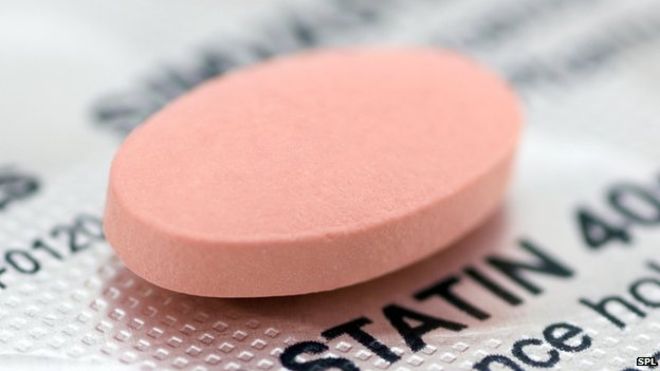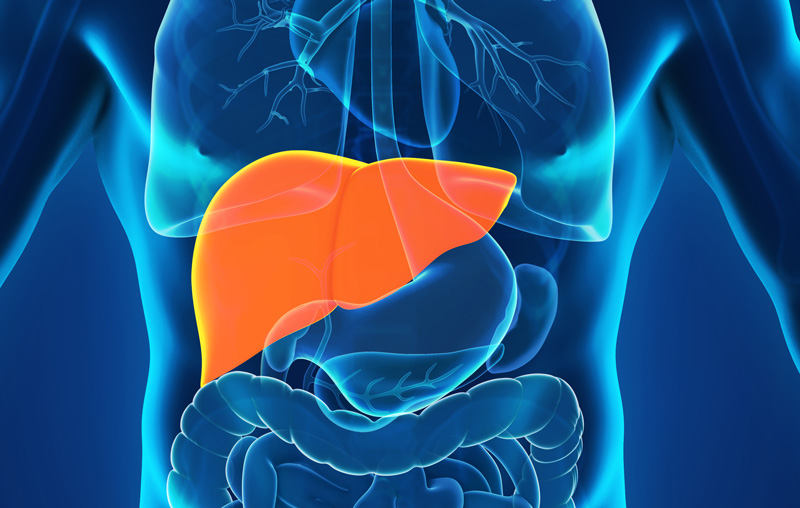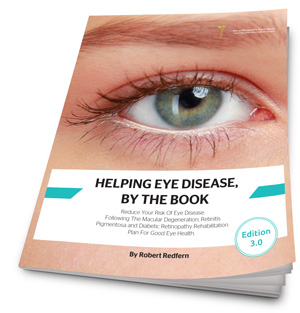Health News (Week 08 – 2019)
By Robert Redfern
I recently saw claims in the media that everyone should take statins as they may be beneficial for everyone so, I looked up the recent studies.
Guess what? There are no independent studies that say this. In fact, it is the opposite. Researchers, led by Dr. Uffe Ravnskov at the University of Lund, Sweden, looked at 19 existing studies which considered the association between ‘bad’ LDL cholesterol levels and the overall risk of death in people aged over 60. They concluded that 92 percent of people with a high cholesterol level lived longer, and called for a re-evaluation of the guidelines for cardiovascular prevention, “in particular because the benefits from statin treatment have been exaggerated.” Of course, researchers in cahoots with the pharma mafia disagree. Well, they would wouldn’t they?
The Fact is: Cholesterol is essential for your body to work.
After saying this, I do get emails came from those with normal high cholesterol and some from concerned people who suffer from a genetic problem called, ‘Familial hypercholesterolemia,’ This condition shows up as an unnatural very high cholesterol. Those who have it die around 15 years earlier than average from atherosclerosis. Those who emailed me, pointed out, that this group has to take statins to prevent this premature death. I disagree.
Firstly, I agree that taking statins may improve to some degree the life expectancy of this group if the follow they same junk food diet consumed by the majority of the population of western countries. That may sound reasonable, except, I also disagree that high cholesterol is the cause of their heart disease (atherosclerosis).
Atherosclerosis is caused by: lack of essential nutrients, eating starchy carbs, high sugar foods and drinks, chargrilled foods, bad oils, cortisol (stress/anxiety) and/or infection.
These all elevate inflammation in the arteries, glycated proteins, and cause massive free radicals that damage the endothelium lining of the arteries. Your body then sets in motion an emergency action plan by which to protect and hopefully repair this damage. The first line emergency crew that is sent is cholesterol (LDL). The level of LDL is a measure of how serious the damage is. This has many essential functions, but the most critical one is rapid repair of the damaged cells.
IF statins work at all, it is because they are working as an anti-inflammatory (see study at the end).
Cholesterol is essential
Anybody that tells you high cholesterol is a disease is crazy. Your liver produces cholesterol because it is so utterly vital for the health of your body. It is possible to get it in the diet, but the body cannot leave it to chance that you would consume it. You would die instantly without cholesterol – it is a fundamental part of every cell in your body.
Except in the ‘Familial hypercholesterolemia’ group, the reason why you have elevated cholesterol is one or more of the causes above is damaging your cells. My question is if cholesterol is doing you good, why would you take a dangerous drug to lower it when just as many people with low cholesterol get heart disease?
‘Familial hypercholesterolemia’ Group 1 (Heterozygous FH)
This is the rare group where the rate is 1:500 births. Statins were originally introduced for people with this form, ‘Familial hypercholesterolemia’ and as I pointed out earlier, all in this group have high cholesterol. To be clear they have high LDL cholesterol and low HDL. LDL is the critical cholesterol for cell regeneration and HDL recycles it ONLY after it has done its job.Since LDL cannot do its job efficiently as a result of the gene problem the HDH stays low. The LDL however stays high as it is being sent by the liver to help repair damage, but is unable to do its job. There is no doubt some of the 1:500 people who suffer from this gene defect live a longer life than those who do not take statins. This success is the only reason statins were then given to everyone with high cholesterol, even though the studies show they do not work and have side effects. To be clear not everyone with ‘Familial hypercholesterolemia’ lives a long and healthy life and the studies are not clear just how many do. Doctoring studies (no pun intended) is how Big Pharma confuses the media and your doctor.
Statins in these cases probably work because they are working as an anti-inflammatory (see study at end).
‘Familial hypercholesterolemia’ Group 2 (Homozygous)
This is the rare group where the rate is 1:1,000,000 Births. This ‘Familial hypercholesterolemia’ group have high LDL cholesterol that hardly works at all repairing cells and they may benefit from statins
Conclusion:
- Cholesterol (LDL) is critical for healthy regeneration of the cells in the body.
- High cholesterol is not a disease, and does not in itself, cause any damage.
- High cholesterol is an indication of critical damage taking place in the body.
- This damage is the result of eating starchy carbs, high sugar foods and drinks, chargrilled foods, bad oils, cortisol (stress/anxiety) and/or infection.
- The disease is chronic inflammations caused by the things at number 4.
- The inflammation damages the cholesterol collecting at the point of damage.
- Statins may only work as a weak anti-inflammatory.
- Statins deplete mevalonate and hence, CoQ10 which is also critical for cell energy.
- Everyone may benefit much better than merely taking statins by the following lifestyle:
- A… Stop eating starchy carbs, high sugar foods and drinks, chargrilled foods, processed foods, and bad oils.
B… Take a high dose, powerful serrapeptase formulation, such as Serranol.
C… Take a high absorbency, Ubiquinol C0Q10, such as UB8Q10
D… Take a full spectrum, sublingual B formulation, such as B4Health.
E… Try to walk 3-5 miles every day.
Or read my eBook: IMPROVING HEART DISEASE IN 30 DAYS.
Remember
If you believe doctors and drugs will help you to get healthy and live a longer life, then you will almost certainly be disappointed. Diseases are caused by lifestyle and so is good health. Give up the lousy lifestyle and change to a healthy one. There is no downside to being healthy.
Studies (independent)
Differential hs-CRP reduction in patients with familial hypercholesterolemia treated with aggressive or conventional statin therapy.
Van Wissen S1, Trip MD, Smilde TJ, de Graaf J, Stalenhoef AF, Kastelein JJ.
Author information
Abstract
BACKGROUND:
High sensitivity C-reactive protein (hs-CRP) has emerged as the best studied and most promising marker of inflammation in atherosclerotic vascular disease. (Robert’s comment: The healthy reading is 6)
MATERIALS AND METHODS:
The ASAP (effects of Atorvastatin vs. Simvastatin on Atherosclerosis Progression) study was a 2-year randomised, double-blind trial with 325 familial hypercholesterolemia patients, treated with torvastatin 80 mg or imvastatin 40 mg. Intima media thickness (IMT) of carotid artery segments and hs-CRP levels were determined at baseline, 1 and 2 years.
RESULTS:
Baseline median hs-CRP values were 2.1 mg/l (interquartile range (IQR) 0.9-5.2) and 2.0 mg/l (IQR 0.8-3.0) and after 2 years these levels decreased to 1.1 mg/l (IQR 0.6-2.4) and 1.5 mg/l (IQR 0.6-3.0) in the atorvastatin 80 mg and simvastatin 40 mg group, respectively. These changes were significant within as well as between the two groups. No correlations were observed between change in hs-CRP after 2 years and change in lipids. A significant correlation was found in univariate analysis between the decrease of hs-CRP and the reduction of IMT.
CONCLUSIONS:
Our results show that atorvastatin 80 mg reduces hs-CRP levels to a greater extent than simvastatin 40 mg. Furthermore, we show that the extent of hs-CRP reduction is associated with the progression rate of the atherosclerotic process as measured by IMT.
PMID: 12417288 [PubMed – indexed for MEDLINE]
Publication Types, MeSH Terms, Substances C-reactive protein in patients with familial hypercholesterolemia: no effect of simvastatin therapy.
Mohrschladt MF1, de Maat MP, Westendorp RG, Smelt AH.
Author information
Abstract
Patients with familial hypercholesterolemia (FH) are especially at risk for premature cardiovascular disease (CVD). Recent studies revealed C-reactive protein (CRP) as a strong predictor of future first or recurrent CVD events, suggesting that CRP plays an important role in the development of atherosclerosis. The aim of this study was to evaluate the effect of one year of simvastatin treatment on serum levels of CRP and to assess the influence of risk factors for CVD on CRP concentrations in patients with FH. We measured baseline CRP levels in 337 patients with FH. A second blood sample, collected after one year of treatment with simvastatin (20–40 mg once daily) was measured in a subgroup of 129 patients. Patients with CVD present at baseline had significantly higher serum levels of CRP (2.26 mg/l versus 1.55 mg/l, P(0.001). CRP levels were associated with smoking, body mass index, age, levels of triglycerides (TG), and the use of NSAIDs or anticoagulation drugs. Simvastatin therapy significantly improved lipid profiles in the intervention group. There was a small, but non-significant decrease of CRP levels upon treatment. CRP decreased from 1.51 mg/l median (interquartile range (IQR) 0.76–3.41) at baseline to 1.24 mg/l median (IQR 0.72–2.92) after treatment, (P=0.328). In conclusion, CRP levels were associated with the presence of CVD in FH patients. Simvastatin therapy had no significant effect on CRP levels in these patients.
PMID: 11472751 [PubMed – indexed for MEDLINE]





